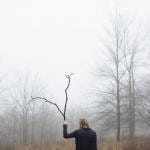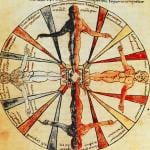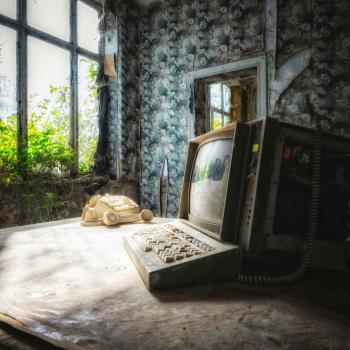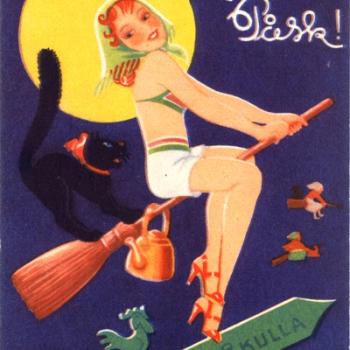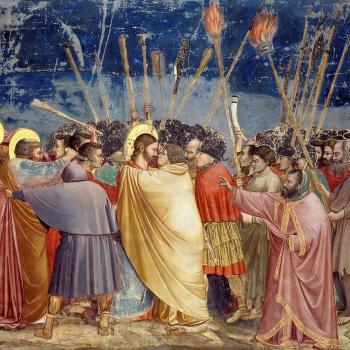First published in The Cauldron No. 150, November 2013
Since the last century, and accelerated by the works of authors such as anthropologist Margaret Murray (1863 – 1963), Charles Godfrey Leland (1824 – 1903) and Gerald Gardner (1884 – 1964), there has been a culture within witchcraft circles for the perpetuation of ‘tradition’, the belief in a continuation of concepts, faith, and even ritual; either passed on directly or ‘retrieved’, especially through folklore. Given the current popularity of Traditional Witchcraft, perhaps it is about time to kick over some sacred cows, as the late Craft moderniser Robert Cochrane once wrote [1]. The proliferation of Traditional Witchcraft over recent years is indicative of a current threading its way through modern movements. Many disaffected with, or unable to find access to (or, indeed, comfort from within), traditional initiatory Wicca have turned their attention to the subtleties that best suit their idiosyncratic and eclectic blend of praxes and concepts. Whilst this is not a bad thing, enabling personal identity and belief, it does muddy the waters. The use of pseudo-archaic phraseology, flowery or even verbose literature reinforces the ‘tradition’, either hinting at provenance or elitism, or both. The thesis presented here is, perhaps, controversial, yet neither radical not novel.
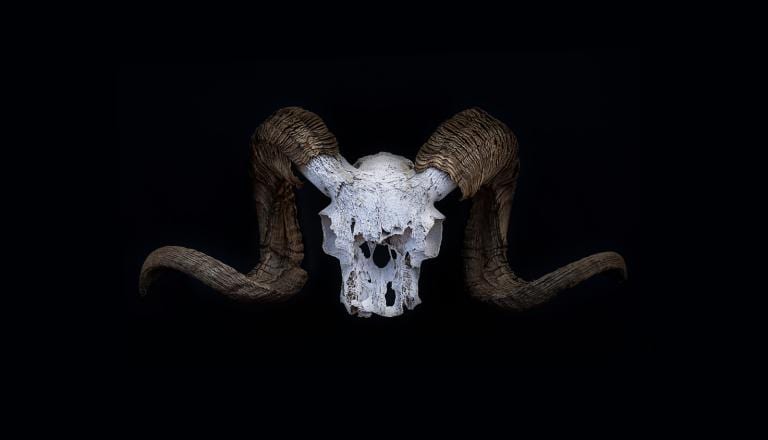
What do we mean, then, by the original idea of Traditional (capital T) and those traditions operating within it?For clarification upon this confusing subject, we must consider first both Tradition as a proper noun and tradition the regular noun. In his rune work Alu: An Advanced Guide to Operative Runeology, Edred Thorsson (Dr Stephen Flowers) gives a clear overview of the subtle, yet symbiotic, relationship between tradition and Tradition (noun and proper noun). For Thorsson, Tradition is ‘…a permanent set of immutable and transcendent ideas not subject to change through time’, which differs from tradition ‘…which is the historical and often imperfect process of transmitting these ideas through time’. [2]
The elements of a tradition in the Outer initially serve to confirm a new identity, often through the familial unit, connected through that bond, whilst on the Inner it builds the group ergregore.
Anthropology has given us many examples where ‘invented tradition’ occurs, presenting a sentiment of continuance with the past in a short period of time. Invented tradition is described as consisting of practices of a ritual or symbolic nature and imparting values or behaviours through regular patterns of repetition and, therefore, implying some kind of continuity with the past (Hobsbawm, 1983). This is most tacitly witnessed in the Twentieth-Century and post millennium use of Nationalism to establish identity and giving perceived legitimacy to cultural practice, philosophy or belief (Hobsbawm, 1983) [3]. In some instances, this may have occurred deliberately, establishing the sense of a tradition for a particular purpose, frequently and most commonly in order to build a national identity of a people, or class of peoples.
While invented traditions sometimes attempt to establish an historic connection with the past, it might be argued that this link is perhaps less relevant than the strength of the tradition itself, and its effectiveness. Once a tradition is formed, does it matter whether it truly echoes the past? What does this mean for Traditional Witchcraft: is it an ‘invented tradition’ or is it a continuation of an expression of Primordial Tradition of our ancestors?
1960s Traditional Witch magister, Robert Cochrane, in his 1964 Pentagram article, The Craft Today, expressed his exacerbation with the modern witchcraft movement of Wicca. In particular, the initial tone of the piece highlights Cochrane’s frustration with those who longed to reenact or relive some fantasy bygone era; a sentiment that is still present in some popular Craft circles. Indeed, Cochrane makes plain his belief that such people were or are, in actuality, seeking escapism, refusing to face the reality of modern existence.
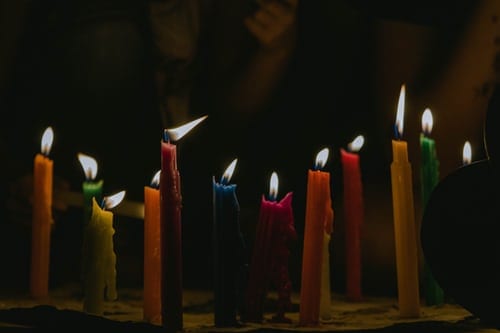
Tradition (proper noun) comes to denote that which transcends time and space. It occurs as the mystical universal current that emerges at various times to different cultures as a gnostic stream of enlightenment, albeit clothed in the cultural conscious awareness of those within which it comes to settle. This, one might say, is the Source. That great 20th Century mystic, René Guénon (1886 – 1951), writing in 1909, described this occurrence as the Primordial Tradition to which he eventually aligned himself, and from which religious expression finds its foundation. Guénon committed many of his written works to the common symbolism found throughout so many traditions that share this sacred language as a means of communication.
Guénon dedicated himself to the understanding of Traditional symbols through learning to approach traditions within which they are taught, including Buddhism, Hinduism, Catholicism, Sufism, and Gnosticism. Like many mystics before and since, Guénon acknowledged that within the bones of each tradition was to be found the universal kernel of Truth, the Source itself, Wisdom. Through the tried and tested means of a traditional system, one might unlock some of these keys and obtain a glimpse. Throughout Guénon’s work, though, there is a sense of emphasis upon the importance of commitment to a tradition in order that its mystical properties may take effect. That is, one must be immersed in a tradition for its symbols and mythos to present a landscape through which one may navigate successfully.
The transmission of tradition is dependent upon the excellence of exchange between people and generations, and is subject to corruption, superstition and stagnation if it does not evolve with the progress of time, or adapt to the cultural environment.
Within Traditional Witchcraft forums on the interwebs, it is still common to hear people dismissing Cochrane as having fabricated a tradition, or squabbling over the source of his information. This is rather a terrible lapwing and, although it has been repeated time and again, the truth is that Cochrane’s source was The Source, being in many respects inspirational. Those who study such things as Guénon might term this the Primordial Tradition. But, while Cochrane may have tapped into Tradition, he still held within his own personal legacy the keys of a tradition which enabled the Source to find an outlet expressed within the work of his Coven, the Clan of Tubal Cain.
Which leads us to the traditions that developed, and continue to grow, evolve, or emerge, that possess a certain mythos which leads us, like a labyrinth, to the Qutub, point, and egress. While Tradition (proper noun) is free of human endeavours and corruption, traditions (noun) are subject to the nature of humankind with all its imperfections. The transmission of tradition is dependent upon the excellence of exchange between people and generations, and is subject to corruption, superstition and stagnation if it does not evolve with the progress of time, or adapt to the cultural environment. This has been the case with many traditions in the past, including, perhaps, some major religious traditions such as Catholicism.
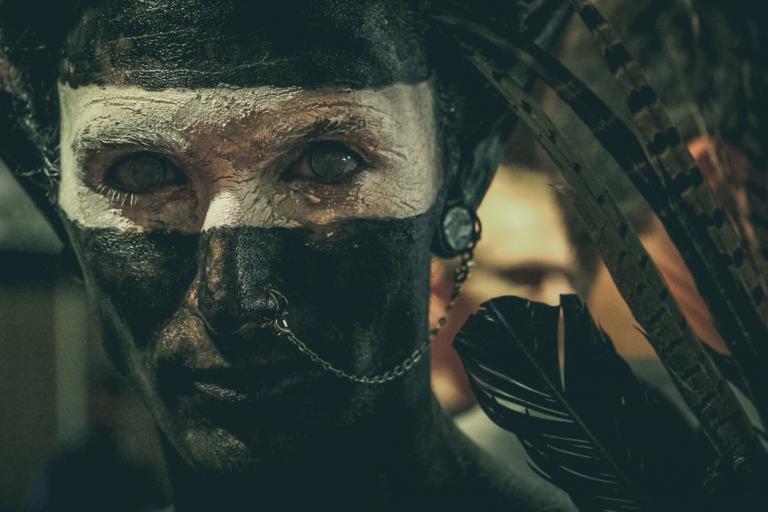
For Traditional Witchcraft, then, it is clear that this once denoted a Craft that is traditional in the sense of praxes and mythos passed along, containing whispers of keys, whilst simultaneously being concerned with Truth, in possession of that kernel of the Primordial Tradition. Whilst a tradition, be it Clan of Tubal Cain, Cultus Sabbati, or any number of Traditional Witchcraft groups old or new, have their own set of myths, ritual and tradition, one cannot be held to be more valid than another. The truth is that the validity of the tradition lies squarely in its effectiveness through the work. The elements of a tradition in the Outer initially serve to confirm a new identity, often through the familial unit, connected through that bond, whilst on the Inner it builds the group ergregore.
A core mythos, system of symbols and rituals serve to establish the tradition in the mindset, preparing the inductee for the Mysteries proper; performed with true intent, these all coalesce to produce a desired result. The provenance of the tradition rapidly becomes a less relevant consideration to the power it works when producing experiential results. Each idea about the tradition emerge and work upon different levels of our being, like passing through the Mansions of the Interior Castle, or the hekhalot (palaces) of the Merkavah Kabbala, each requiring its own key. We move at our own pace toward initiation into the Primordial Tradition. What truly matters is whether the elements of the tradition work within the individual to induce the mystical experience, or affect the magic we are working. While one may belong to a traditional group, possessed of its tools and myths, rituals and symbols, it is always an individual and personal journey.
Robert Cochrane claimed to have inherited certain traditions but he was also a revolutionary and sought to elevate invented tradition, folk custom, or traditional praxes to a higher realm. For him, what mattered in the traditional practices was if they worked and he challenged modern witchcraft to work through violent and radical change, which examined ritual to determine whether those sacred cows still give milk [4].
[1] The Craft Today, Robert Cochrane, Pentagram 1964 [2] Thorsson, Edred. ALU, An Advanced Guide to Operative Runology (p. 32). Red Wheel Weiser. [3] Eric Hobsbawm, Inventing Traditions, in THE INVENTION OF TRADITION 1-14 (Eric Hobsbawm & Terence Ranger eds., 1983) [4] The Craft Today, Robert Cochrane, Pentagram 1964

